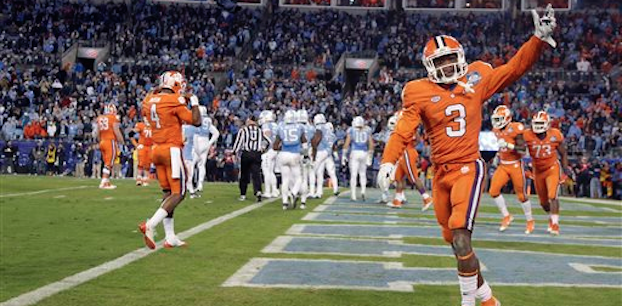The numbers Deshaun Watson put up in 2015 equate to one of the greatest seasons in the history of college football. By this point, we all know the statistics: 4,100 yards passing, 1,100 yards on the ground, 47 total touchdowns and a completion rate hovering close to 68 percent. Watson is pretty good at this old quarterbacking thing. Clemson spent essentially the entire season without Mike Williams — who led the Tigers with 1,030 receiving yards in 2014. Williams was injured on Clemson’s first drive of the season in 2015, when he fractured his neck snagging a four-yard touchdown pass against Wofford.
It took a collection of talented and industrious receivers to help replace the production of Williams. Charone Peake and Jordan Leggett upped their production. Freshmen Hunter Renfrow and Deon Cain combined for 67 receptions and 10 touchdowns. It came as no surprise, however, that Artavis Scott became Watson’s money man during Clemson’s run to the national championship game. Scott and Williams paired nicely in 2014, when as a freshman, Scott hauled in 76 passes for 965 yards and eight touchdowns. Without the taller Williams, though, Scott became the fulcrum of Clemson’s prolific passing attack, and the receiver its trigger man, Watson, looked to in high-leverage situation.
Thanks to the incredible and tireless research of Bill Connelly, we have some wonderful data to further demonstrate Watson’s fondness of Scott. As a sophomore, Scott was targeted a team-leading 120 times, which ranked third in the ACC, behind Pitt’s Tyler Boyd (126) and Virginia Tech’s Isaiah Ford (125). When the Tigers dropped back to pass, Scott was targeted nearly a quarter of the time; of their 499 total targets, Scott was the intended receiver 24 percent of the time.
To read more on how good Artavis Scott was for Clemson a season ago, sign up for basic access to ACCSports.com. Get access to the rest of this article and unlimited access to the rest of ACCSports.com when you upgrade to Premium Access! Click on the button below to view all the benefits of becoming a Premium Access member.Get the rest of the story right now with Premium Access!
Premium Access members receive:

















